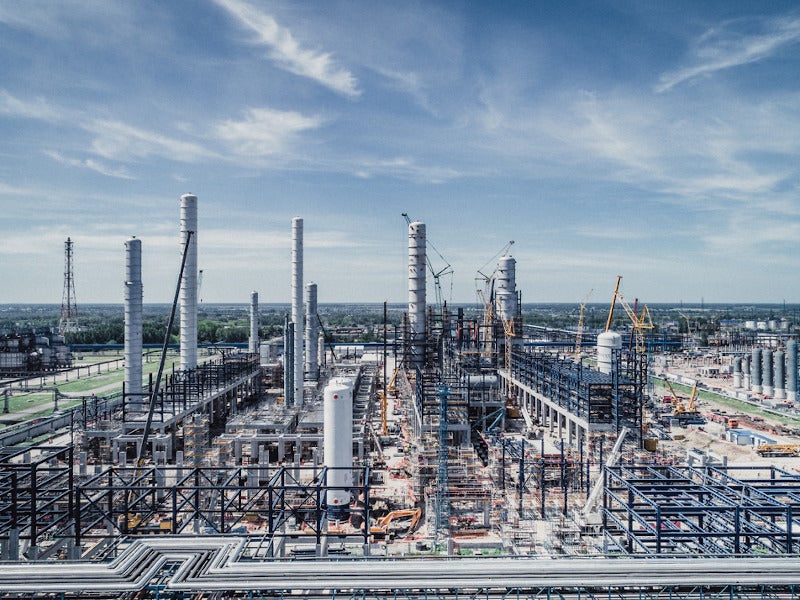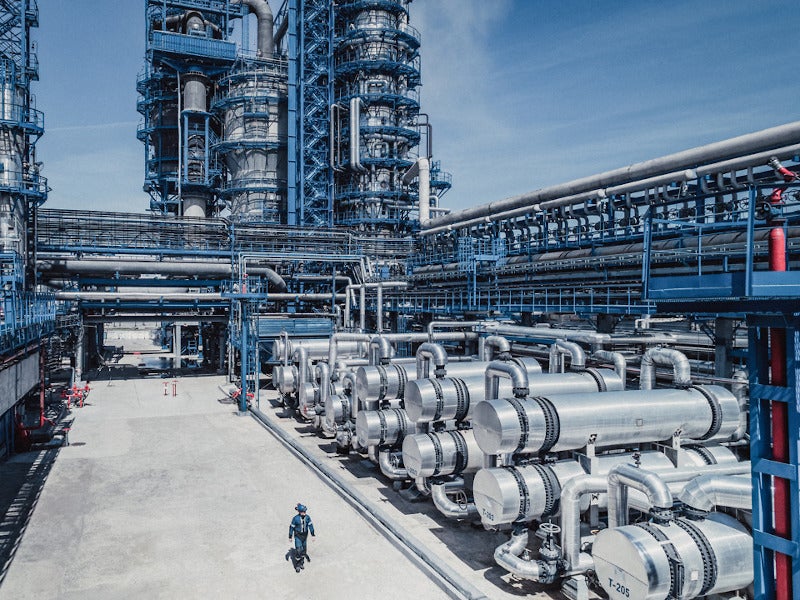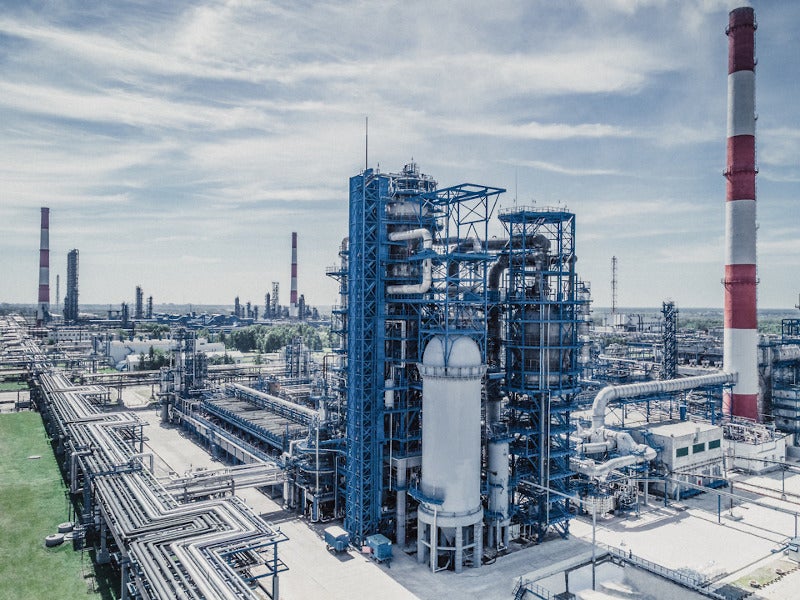The Omsk refinery in Russia, which is owned and operated by Gazprom Neft, has been undergoing full-scale modernisation since 2008. The total investment in the refinery modernisation programme is estimated to be more than £3.5bn ($4.3bn).
The refinery was upgraded to produce fuels meeting Euro 5 standard in phase one of the modernisation programme that was completed in 2015. Scheduled for completion in 2021, the phase two project is aimed at increasing the refining depth to 97% and boosting the light petroleum products yield to 80%.
The Omsk oil refinery has been operational since September 1955 and it had processed a cumulative total of one billion tonnes of crude oil as of 2011.
The current installed capacity of the refinery is 22.23 million tonnes a year (Mtpa) and it processed 20.72 million tonnes of oil in 2019.
Location and processing infrastructure
The refinery is located near the banks of the Irtysh River in Omsk in south-west Siberia, Russia. The berthing facilities of the refinery were modernised to supply diesel, petrol, and aviation fuels to ports in the Ob and the Irtysh Rivers.
As many as 50 types of oil products including petrol, diesel, jet engine fuel, heating oil, benzene, toluene, orthoxylene, paraxylene, and bitumen are produced at the refinery.
The refinery’s first catalytic cracking unit was commissioned in 1959 while the aromatic hydrocarbon complex, which produces benzene, orthoxylene, paraxylene, started operations in 1983.
The processes performed at the refinery include oil desalting and dehydration, primary oil refining, catalytic cracking, sulphuric acid alkylation, catalytic reforming, isomerisation, and hydrotreating of petrol and diesel.
Omsk phase one refinery modernisation
The first stage of the refinery modernisation programme included the construction of an isomerization plant, a catalytic cracking gasoline hydrotreatment unit, a diesel fuel hydrotreatment unit as well as reconstruction of the KT-1/1 atmospheric residue deep conversion complex.
The Isomalk-2 light naphtha isomerisation plant with a capacity of 800,000t a year was commissioned in October 2010. The unit enables the production of high-octane petrol.
A new motor fuel hydroskimming facility, which includes a catalytic cracking gasoline hydrotreatment unit and a diesel fuel hydrotreatment unit was commissioned in 2012.
The reconstruction of the KT-1/1 atmospheric residue deep conversion complex with a capacity of 2.4Mtpa was completed in December 2015.
The reconstruction of the AT-9 primary crude distillation unit was completed in 2015 which increased the capacity of the unit to 5.1Mtpa.
Phase two upgrade of the Omsk refinery facility
The second stage of the refinery modernisation programme includes the installation of a catalytic reformer, a new delayed coking unit, a new diesel fuel hydrotreatment and de-waxing unit, an advanced oil refining complex (AORC), and a new crude distillation unit.
The construction of an oil-refining catalyst production facility, with a capacity of 21,000t a year, started in October 2019 with its completion expected in 2021. The catalysts will be used in deep oil refining processes and the production of Euro 5 fuels.
The new facility will produce various types of catalysts including 4,000t of hydrotreating catalysts, 2,000t of hydrocracking catalysts, and 15,000t of catalytic cracking catalysts.
The installation of a new delayed coking unit with a capacity of 2Mtpa was completed in April 2020, while the construction of a new diesel fuel hydrotreatment and de-waxing unit of 2.5Mtpa capacity is expected to be completed in 2021.
The advanced oil refining complex (AORC) with a capacity of 2Mtpa will enable the production of light petroleum products. The processing units in the AORC will include a vacuum gasoil hydrocracking unit, a sulphur unit, and a hydrogen unit.
The new crude distillation unit of 8.4Mtpa capacity, expected to be commissioned in 2021, will replace six existing old units at the refinery.
The AVT-10 crude distillation unit (CDU) with a capacity of 8.6Mtpa is also being modernised as part of the project.
The Omsk refinery’s full-scale modernisation programme also includes the construction of a biosphere water treatment complex to treat the effluents from the refinery in mechanical, flotation, and biological treatment facilities.
Contractors involved
KBR was contracted to provide project management consultancy services for the construction of the advanced oil processing complex at the Omsk refinery facility in May 2014.
Maire Tecnimont was awarded an engineering, procurement, and construction management (EPCM) services contract worth £155m ($215m) for the new delayed coking unit in February 2018.
RusTechnip, a joint venture between Technip and a Rostec State Corporation, bagged an EPCM services contract for a new crude distillation unit in July 2016. RusTechnip also had performed the front-end engineering and design (FEED) study for this project.
Volgogradneftemash manufactured and supplied equipment for various other units in the refinery including the new deep conversion complex, diesel oil hydrotreating and dewaxing unit, and the new delayed coking unit
Izhorskiye Zavodi, part of the OMZ Group, manufactured and supplied four hydro-cracking reactors and two high-pressure separators for the deep conversion complex.
Dynamics Scientific and Production Centre, a Russia-based company, is providing a production control and monitoring system to improve the safety and operational efficiency of the refinery.





